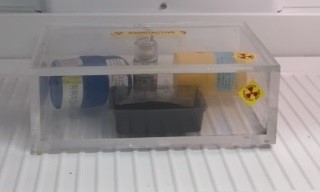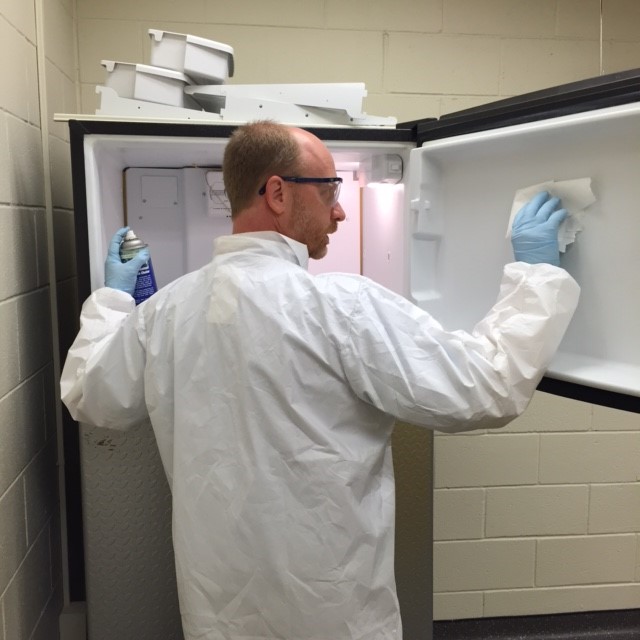

It is not uncommon for researchers to use volatile radioactive compounds in their experiments. Tritiated water or thymidine (H-3), radioiodinated compounds (I-125/I-131), and S-35 labelled amino acids methionine or cysteine are the most common of these.
Although the amount of radiation incorporated into these volatiles is not sufficient to give a significant radiation dose to anyone, it may be enough to exceed contamination levels where it is being stored, resulting in a nuisance for researchers having to decontaminate the equipment.
Basic lab safety rules require using volatiles in a properly functioning fume hood. However, what if the compound requires refrigeration or freezing during storage? Radioactive contamination has been detected on the inside of freezers and refrigerators where these compounds are stored.
To prevent contamination, simply store the compound in a sealable container along with a canister or tray of activated charcoal to absorb the vapors. Place the entire container in your freezer/refrigerator. When finished, the used charcoal can be put in a sealable bag and placed in your solid radioactive waste. Contact the Office of Radiological Safety for more information.
